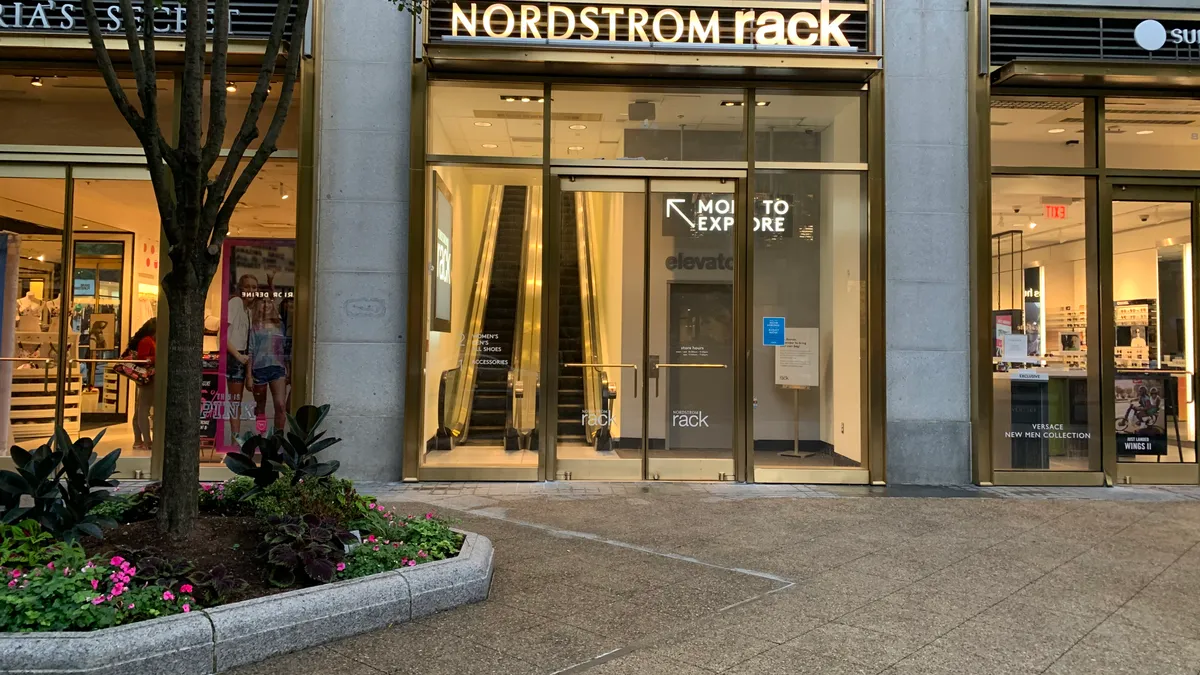Dive Brief:
- S&P Global Market Intelligence released its most recent list of the most vulnerable department store and apparel companies on Wednesday. Christopher & Banks and RTW Retailwinds (owner of New York & Company) held on to the No. 1 and No. 2 spots, respectively.
- Nordstrom, which has struggled with sales declines and faced downgrades, edged into the bottom slot of the list, at No. 15, according to an S&P post. At No. 4 is L Brands, which has seen plummeting sales in its Victoria's Secret unit. (Private equity firm Sycamore Partners recently agreed to buy the unit.) Stage Stores, which is reportedly looking at a possible bankruptcy, made the list as well at No. 7.
- The firm noted the uptick in retail bankruptcies this year, counting five in the retail industry in 2020 so far. The year's bankruptcies so far include Pier 1, The Worth Collection and SFP Franchise (owner of Papyrus and other specialty retailer banners).
Dive Insight:
S&P in its post painted a picture of a still-strong economy and consumer, with retail sales ticking up overall. But the apparel and department store sectors, in particular, are undergoing a steep decline.
In January, clothing and department store sales declined year-over-year, according to Commerce Department data. Department store sales were especially hard-hit, with sales down 3.9% compared to January 2019.
The month of January saw employee declines in clothing, home goods and general merchandise retailers from December to January and year over year as well, according to S&P. Prices for apparel have declined 1.3% year-over-year, the firm said.
Against that backdrop, there are still a wide range of retailers in apparel and department stores that are at risk of default and bankruptcy.
S&P's most vulnerable department store and apparel companies
| Name | 1-year probability of default |
|---|---|
| Christopher & Banks | 13.1% |
| RTW Retailwinds | 9.9% |
| Destination XL Group | 9.9% |
| L Brands | 8.7% |
| Francesca's | 8.6% |
| Tailored Brands | 8.3% |
| Stage Stores | 7.3% |
| Stein Mart | 6.8% |
| Ascena Retail Group | 6.7% |
| Centric Brands | 5.9% |
| Vince Holding | 4.8% |
| J. Jill | 4.1% |
| J.C. Penney | 3.2% |
| The Children's Place | 2.4% |
| Nordstrom | 2% |
Source: S&P Global Market Intelligence, data as of Feb. 18
It's hard to see where the bottom is for department stores and full-price apparel sellers. The set of challenges remains fully in place. Both sectors are stuck in discounting traps, as consumers have come to expect sales, and full-price apparel retailers face brutal price competition from off-pricers, discounters, mass merchants and online players including Amazon.
More, retailers in earnings releases and bankruptcy filings continue to bemoan traffic declines at malls. Bankruptcies and downsizing have taken out anchors and other important storefronts from hundreds of malls, and liquidating stores have added to the flood of cheap apparel on the market.
As Moody's analyst noted, when slashing projections for department store profits last year, sales losses in the sector have come even after major players had made investments in technology and other improvements.
All those factors have led to a surge of bankruptcies in recent years: 32 last year, 33 in 2018 and 40 in 2017, by S&P's count.














